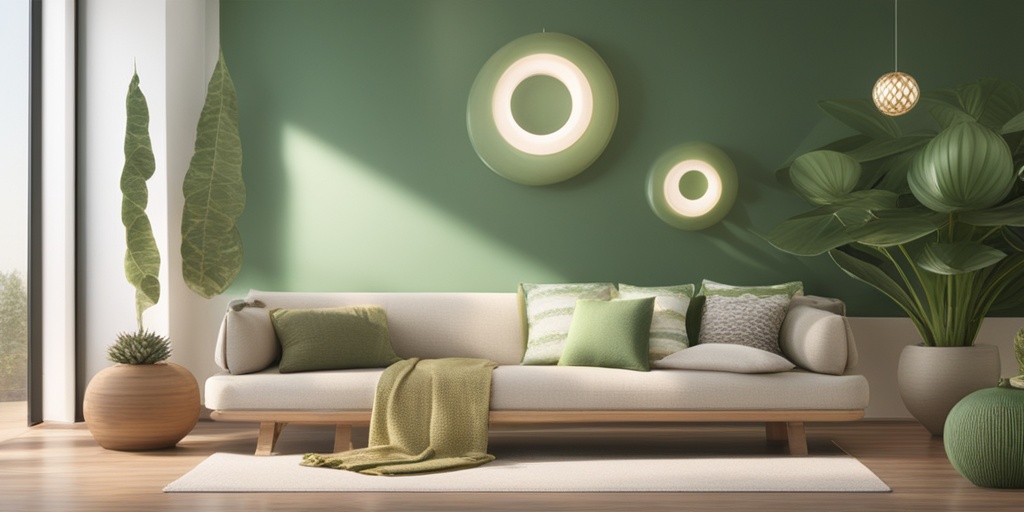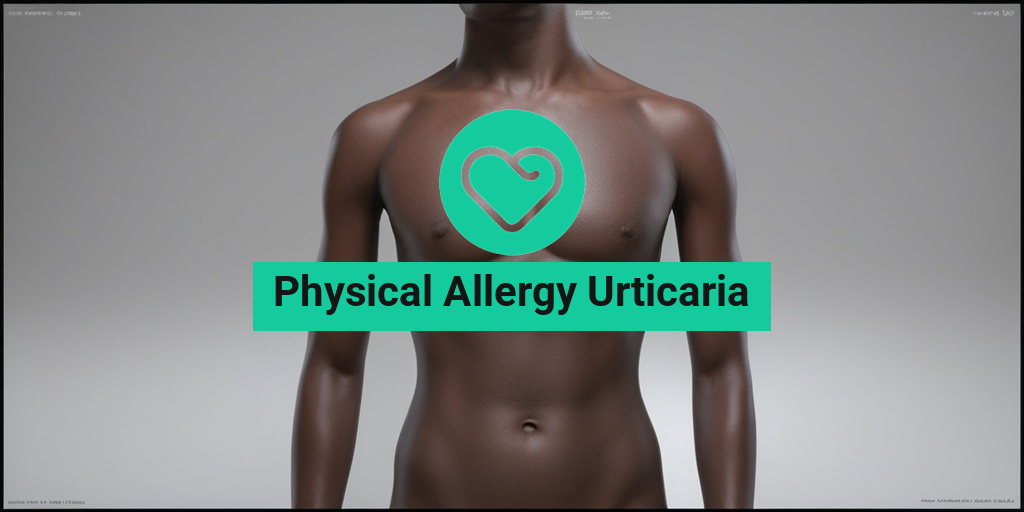What Is Physical Allergy Urticaria?
Have you ever experienced itchy, red, and swollen skin after engaging in physical activities or exposure to certain environmental stimuli? If so, you might be dealing with physical allergy urticaria, a type of skin condition that affects millions of people worldwide. In this article, we’ll delve into the world of physical allergy urticaria, exploring its causes, symptoms, and treatment options.
What is Urticaria?
Before we dive into physical allergy urticaria, let’s first understand what urticaria is. Urticaria, also known as hives, is a skin condition characterized by the appearance of itchy, raised welts or patches on the skin. These welts can vary in size, shape, and color, and can appear anywhere on the body.
What is Physical Allergy Urticaria?
Physical allergy urticaria, also known as physical urticaria or inducible urticaria, is a type of urticaria that occurs in response to specific physical stimuli. This can include:
- Temperature changes (cold or heat)
- Pressure or vibration
- Sweating
- Exercise or physical activity
- Water exposure (aquagenic urticaria)
- Sunlight or UV radiation
- Vibrations or oscillations
In people with physical allergy urticaria, the immune system overreacts to these physical stimuli, releasing histamine and other chemicals that cause blood vessels to dilate and lead to the characteristic skin symptoms.
Physical Urticaria Symptoms
The symptoms of physical allergy urticaria can vary in severity and duration, but common signs include:
- Itchy, red, and swollen skin
- Raised welts or patches (hives)
- Burning or stinging sensations
- Redness and inflammation
- In rare cases, angioedema (swelling of the face, lips, tongue, or throat)
Symptoms can appear within minutes to hours after exposure to the triggering stimulus and can last anywhere from a few minutes to several hours or even days.
If you’re experiencing recurring or severe symptoms, it’s essential to consult a healthcare professional for an accurate diagnosis and treatment plan. In the meantime, Yesil Health AI can provide you with evidence-based health answers and guidance to help you navigate your symptoms.
Stay tuned for our next article, where we’ll explore the causes, diagnosis, and treatment options for physical allergy urticaria. 🌟

Types of Physical Urticaria
Physical urticaria, also known as physical allergy urticaria, is a type of hives that occurs as a result of physical stimuli. There are several types of physical urticaria, each triggered by different physical factors. Let’s dive into the different types of physical urticaria:
Aquagenic Urticaria
Aquagenic urticaria, also known as water allergy, is a rare condition where hives occur after exposure to water. This type of physical urticaria can be triggered by water of any temperature, and symptoms can range from mild to severe. 🌊
Cholinergic Urticaria
Cholinergic urticaria is a type of physical urticaria that occurs due to increased body temperature, usually as a result of exercise, heat, or emotional stress. This type of urticaria is often accompanied by other symptoms such as flushing, sweating, and headaches. ❄️
Cold Urticaria
Cold urticaria, also known as cold hives, is a type of physical urticaria that occurs when the skin is exposed to cold temperatures. This can be triggered by cold air, water, or objects. Symptoms can range from mild to severe and can be accompanied by other symptoms such as itching and swelling. ❄️
Delayed Pressure Urticaria
Delayed pressure urticaria is a type of physical urticaria that occurs several hours after pressure is applied to the skin. This can be triggered by tight clothing, belts, or even sitting or standing for long periods. Symptoms can range from mild to severe and can be accompanied by other symptoms such as itching and swelling. 💼
Heat Urticaria
Heat urticaria is a type of physical urticaria that occurs when the skin is exposed to high temperatures. This can be triggered by hot showers, baths, or even spicy foods. Symptoms can range from mild to severe and can be accompanied by other symptoms such as flushing and sweating. ☀️
Causes of Physical Allergy Urticaria
While the exact causes of physical allergy urticaria are not fully understood, there are several factors that can contribute to its development. Let’s explore some of the possible causes of physical allergy urticaria:
Genetics
Research suggests that genetics may play a role in the development of physical allergy urticaria. If you have a family history of urticaria or other allergic conditions, you may be more likely to develop physical allergy urticaria. 👪
Imbalanced Immune System
An imbalanced immune system can lead to the development of physical allergy urticaria. When the immune system is overactive or underactive, it can lead to the release of histamine, which can cause hives and other symptoms. 🧦
Environmental Factors
Environmental factors such as stress, anxiety, and certain medications can contribute to the development of physical allergy urticaria. Additionally, exposure to certain substances such as chemicals, dyes, or fragrances can trigger physical urticaria. 🌎
Underlying Medical Conditions
Certain underlying medical conditions such as thyroid disease, autoimmune disorders, and skin conditions can increase the risk of developing physical allergy urticaria. 🏥
While the causes of physical allergy urticaria are complex and multifaceted, understanding the different types and possible causes can help you better manage your symptoms and find effective treatment options. 💊
![]()
Risk Factors for Developing Physical Urticaria
Physical urticaria, also known as physical allergy urticaria, is a type of hives that occurs as a result of physical stimuli such as cold, heat, sunlight, water, or exercise. While anyone can develop physical urticaria, certain individuals are more prone to it due to various risk factors.
Genetic Predisposition
Research suggests that people with a family history of physical urticaria or other allergic conditions are more likely to develop the condition. If you have a first-degree relative (parent or sibling) with physical urticaria, your risk of developing it increases.
Age and Gender
Physical urticaria can affect anyone, regardless of age or gender. However, it is more common in young adults, particularly women. According to some studies, women are more likely to develop physical urticaria than men, possibly due to hormonal fluctuations.
Environmental Factors
Environmental factors such as temperature changes, humidity, and exposure to certain chemicals can trigger physical urticaria in susceptible individuals. For example, some people may experience hives after taking a cold shower or exercising in extreme temperatures.
Underlying Medical Conditions
Certain medical conditions, such as thyroid disorders, autoimmune diseases, and gastrointestinal disorders, can increase the risk of developing physical urticaria. Additionally, people with a history of atopic dermatitis or asthma may be more prone to physical urticaria.
Lifestyle Factors
Lifestyle factors such as stress, poor diet, and lack of exercise can also contribute to the development of physical urticaria. A diet rich in processed foods, sugar, and unhealthy fats can lead to inflammation, which may trigger physical urticaria in some individuals.
How Is Physical Urticaria Diagnosed?
Diagnosing physical urticaria can be challenging, as the symptoms can be similar to those of other skin conditions. A healthcare professional will typically conduct a physical examination, take a detailed medical history, and perform various tests to rule out other conditions.
Physical Examination
A physical examination will help the healthcare professional identify the characteristic wheals (hives) and assess their size, shape, and distribution. They may also look for other signs of physical urticaria, such as itching, redness, and swelling.
Medical History
A thorough medical history will help the healthcare professional identify any underlying medical conditions or environmental factors that may be contributing to the development of physical urticaria. They may ask questions about your diet, lifestyle, and any medications you are taking.
Diagnostic Tests
In some cases, diagnostic tests such as skin prick testing, blood tests, and elimination diets may be necessary to rule out other conditions and confirm the diagnosis of physical urticaria. These tests can help identify any underlying allergies or sensitivities that may be contributing to the condition.
🤕 If you suspect you have physical urticaria, it’s essential to consult a healthcare professional for an accurate diagnosis and appropriate treatment. With the right diagnosis and treatment, you can manage your symptoms and improve your quality of life.

Treatment Options for Physical Allergy Urticaria
Living with physical allergy urticaria can be frustrating and uncomfortable. The constant itching, redness, and swelling can affect your daily life and self-confidence. While there is no cure for physical allergy urticaria, there are various treatment options available to help manage the symptoms and reduce the frequency of outbreaks.
Medications
Antihistamines are commonly prescribed to treat physical allergy urticaria. These medications work by blocking the action of histamine, a chemical released by the body during an allergic reaction. Antihistamines can help relieve itching, reduce the size of hives, and prevent new ones from forming. Corticosteroids may also be prescribed for short periods to reduce inflammation and swelling.
Phototherapy
Phototherapy involves exposing the skin to specific wavelengths of light, such as ultraviolet B (UVB) or narrowband UVB, to reduce inflammation and itching. This treatment option is often used for people with severe physical allergy urticaria who do not respond to other treatments.
Immunotherapy
Immunotherapy, also known as allergy shots, can be effective in treating physical allergy urticaria. This long-term treatment involves regular injections of small amounts of the allergen, which helps the body build tolerance and reduces the severity of symptoms.
Topical Creams and Ointments
Topical creams and ointments, such as corticosteroid creams and calamine lotion, can help reduce itching and inflammation. These creams can be applied directly to the affected area to provide quick relief.
Home Remedies for Physical Urticaria Relief
In addition to medical treatments, there are several home remedies that can help alleviate physical urticaria symptoms. These remedies are natural, easy to use, and can be incorporated into your daily routine.
Oatmeal Baths
Oatmeal has anti-inflammatory and soothing properties that can help relieve itching and reduce inflammation. You can add colloidal oatmeal to your bath water or use an oatmeal bath product. 🛀
Cool Compresses
Applying a cool compress to the affected area can help reduce itching and inflammation. You can use a cold, damp cloth or a cold compress wrapped in a towel.
Aloe Vera
Aloe vera has anti-inflammatory and soothing properties that can help reduce itching and inflammation. You can apply aloe vera gel directly to the affected area.
Dietary Changes
In some cases, physical urticaria can be triggered by certain foods or ingredients. Identifying and avoiding these triggers can help reduce the frequency and severity of outbreaks. Keeping a food diary can help you track your symptoms and identify potential triggers. 📝
Remember to consult with your doctor or healthcare provider before trying any new treatments or home remedies, especially if you have a severe case of physical allergy urticaria or are taking medications. With the right treatment plan and lifestyle changes, you can manage your symptoms and improve your quality of life.

Frequently Asked Questions about Physical Allergy Urticaria
What is Physical Allergy Urticaria?
Physical Allergy Urticaria, also known as physical urticaria, is a type of skin rash that occurs as an allergic reaction to certain physical stimuli, such as temperature changes, exercise, or pressure.
What are the common triggers of Physical Allergy Urticaria?
The common triggers of Physical Allergy Urticaria include:
- Temperature changes (cold or heat)
- Exercise or physical activity
- Pressure or friction
- Sunlight or UV radiation
- Vibrations or oscillations
What are the symptoms of Physical Allergy Urticaria?
The symptoms of Physical Allergy Urticaria can vary from person to person, but common symptoms include:
- Red, itchy, and swollen skin
- Hives or welts
- Blisters or rashes
- Burning or stinging sensation
- Itching or pruritus
How is Physical Allergy Urticaria diagnosed?
Diagnosing Physical Allergy Urticaria typically involves a combination of:
- Medical history and physical examination
- Elimination of other possible causes of symptoms
- Provocation testing (e.g., cold stimulation test)
- Skin prick testing or patch testing
How is Physical Allergy Urticaria treated?
Treatment for Physical Allergy Urticaria usually involves:
- Avoiding triggers or stimuli
- Antihistamines or corticosteroids to reduce symptoms
- Topical creams or ointments to soothe the skin
- Phototherapy or light therapy
- Lifestyle changes, such as stress management and relaxation techniques
Can Physical Allergy Urticaria be prevented?
While it may not be possible to completely prevent Physical Allergy Urticaria, taking steps to:
- Avoid triggers or stimuli
- Maintain a healthy lifestyle
- Manage stress and anxiety
- Wear protective clothing or gear
can help reduce the frequency and severity of symptoms. 🌟




